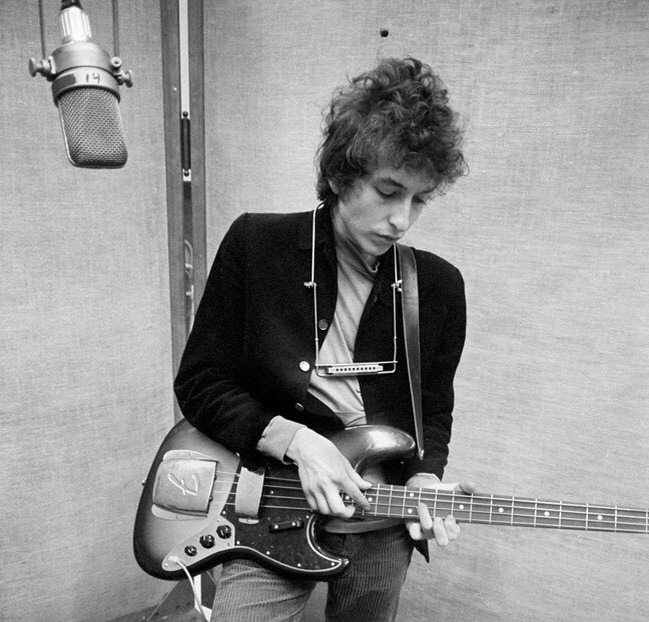Forty-nine years ago, on June 16, 1965, Bob Dylan and a handful of ace session musicians including the great blues guitarist Michael Bloomfield and a upstart organ player, Al Kooper, recorded the take of “Like A Rolling Stone” that established Bob Dylan as one of the great rock ‘n’ rollers of all time.
The session took place in Columbia Studio A in New York, where Dylan was comfortable working, and where he had recorded his previous albums.
Dylan had started recording the song the previous day but didn’t cut a killer take.
The musicians:
Michael Bloomfield, guitar, Joe Macho, Jr., bass, Bobby Gregg, drums. Al Kooper, organ; Paul Griffin, piano; Bruce Langhorne, tambourine.
Greil Marcus writing about the fourth take on June 16, 1965, the take with the magic:
Take 4 — 6.34
“Four,” Wilson says. As it happens, this will be the master take, and the only time the song is found.
“One two, one two three”: the bang that sets it off is not quite as big as in the take just before, but it somehow makes more space for itself, pushes the others away for the fraction of a second necessary to mark the act. Gregg, too, has found the song. He has a strategy, creating humps in the verses and then carrying everyone over them.
As big as the drums are, Griffin plays with light hands; you can imagine his keys loosening. At the very start, piano and bass seem the bedrock — but so much is happening, and with such gravity, you cannot as a listener stay in one place. You may have heard this performance thousands of times, but here, as it takes shape, the fact that it does take shape doesn’t seem quite real. The false starts have created a sense that there can be no finished version, and even if you know this is where it happens, as with all the takes before it you are waiting for it to stop short.
Bloomfield is playing with finesse, passion, and most of all modesty. He has a sense of what to leave out, of when to play and when not to. He waits for his moments, and then he leaps. And this is the only take where, for him, everything is clear.
There is a moment, just after the first “How does it feel?” when Kooper’s organ, Bloomfield’s guitar, and Gregg’s cymbals come together in a single waterspout, and you can feel the song running under its own power. You wonder: what are the musicians thinking, as this astonishing story, told with such a sensation of daring and jeopardy, unfolds in front of them for the first time?
Kooper holds down a stop at the fade, long after everyone else has quit playing. “Like wild thing, baby,” someone says, beside himself. “That sounds good to me,” Wilson says, happiness all over his voice.
You can read Marcus’ description of the entire June 16 session here.
The song that changed everything:
“Maggie’s Farm” into “Like A Rolling Stone” at Newport Folk Festival, July 25, 1965:
Hollywood Bowl, Sept. 3, 1965:
Liverpool, England, May 14, 1966:
The Royal Albert Hall, London, May 26, 1966:
Not sure when or where this is from or who is playing the solo but it smokes:
Bob Dylan with Michael Bloomfield, Warfield Theater, San Francisco, November 15, 1980:
— A Days Of The Crazy-Wild blog post —
